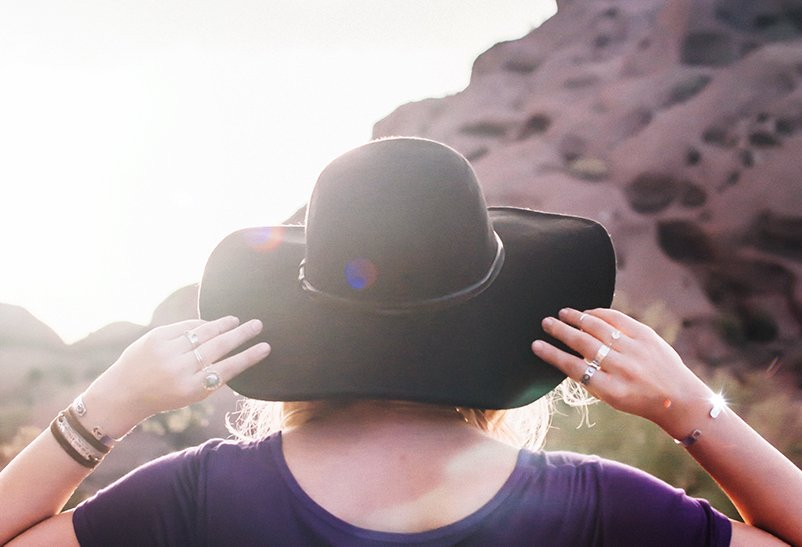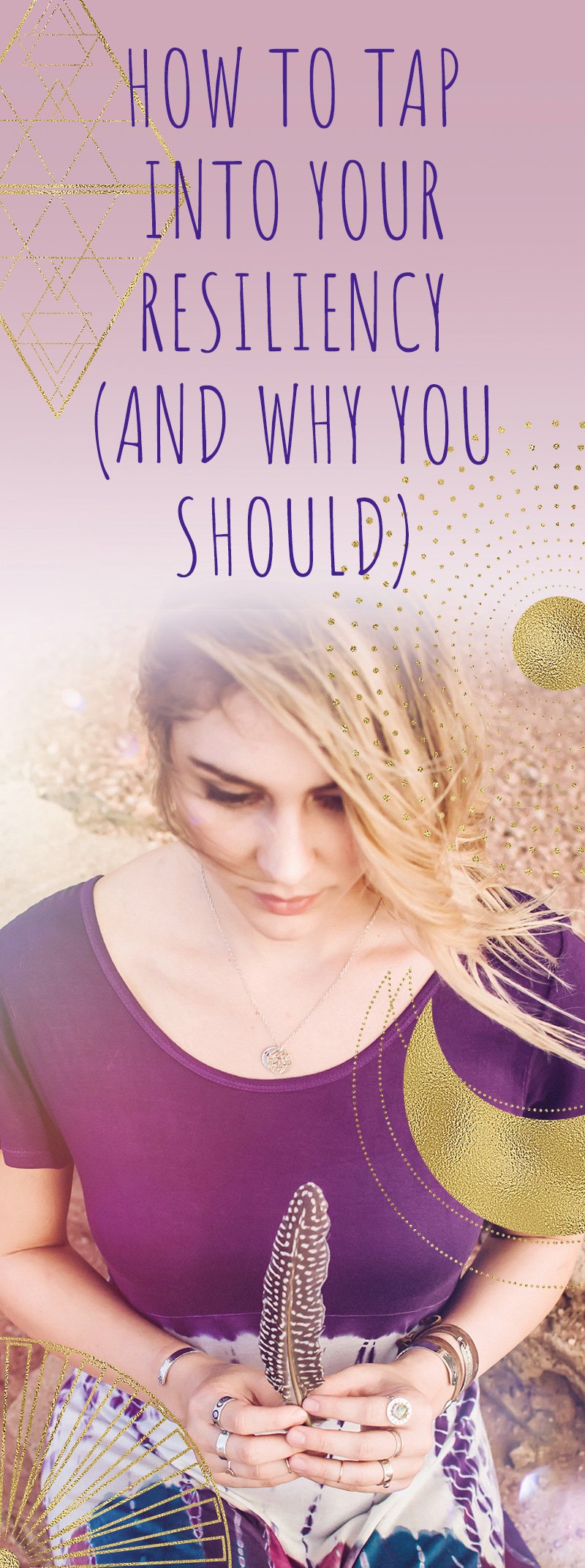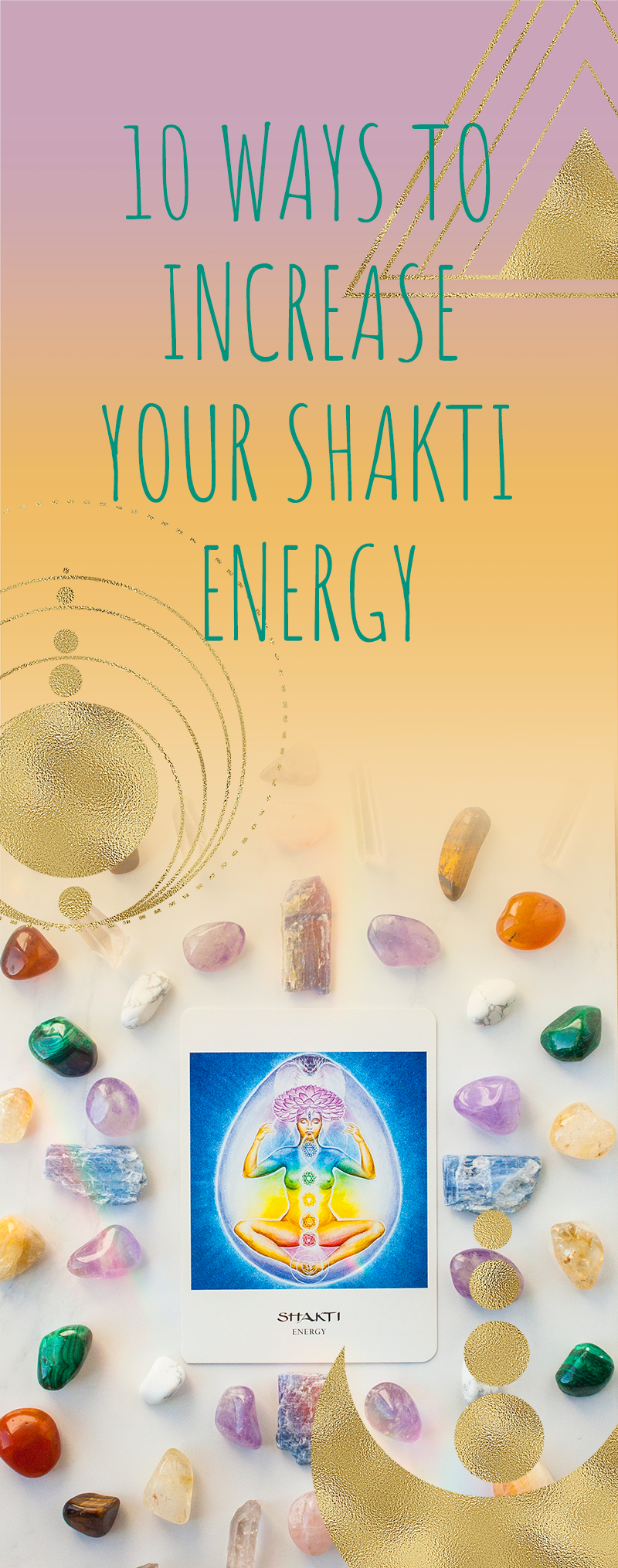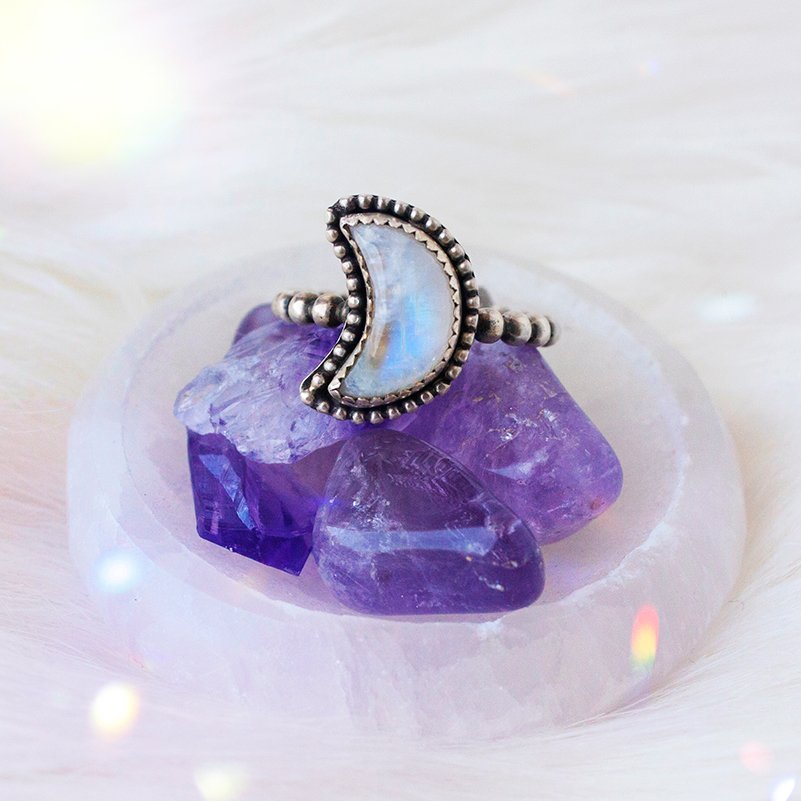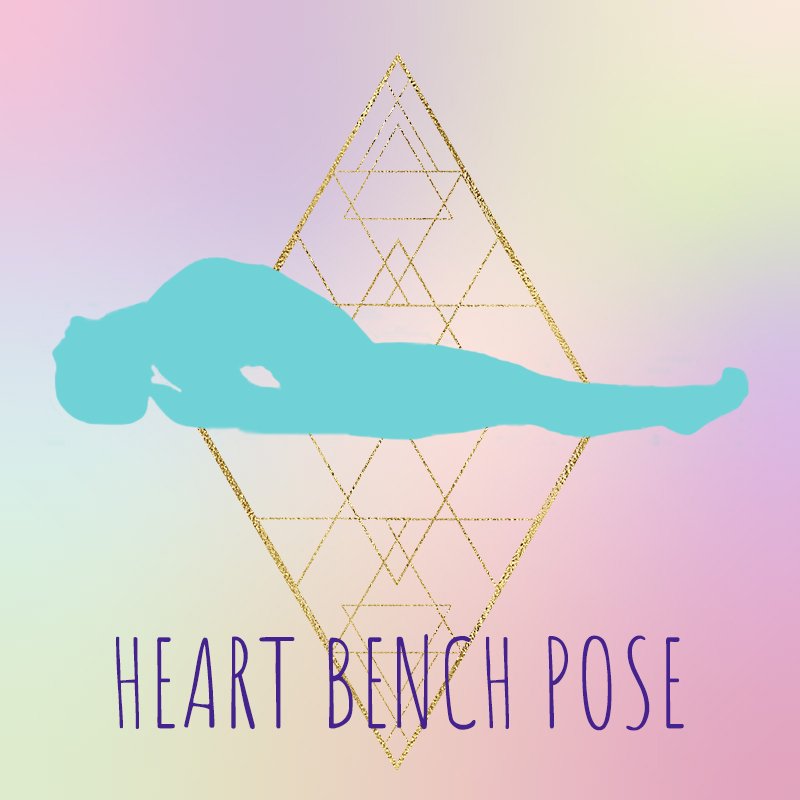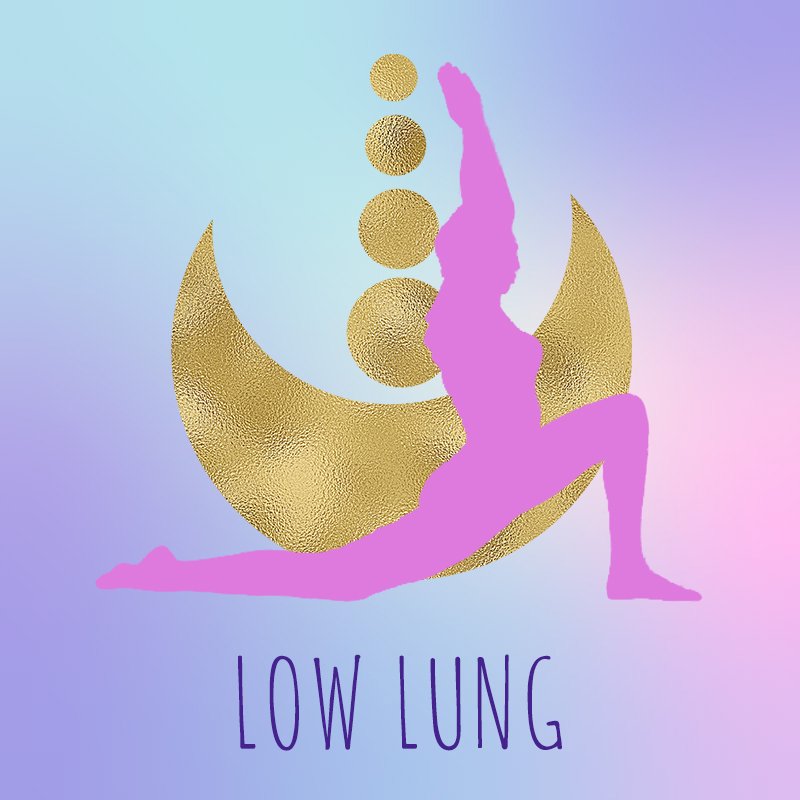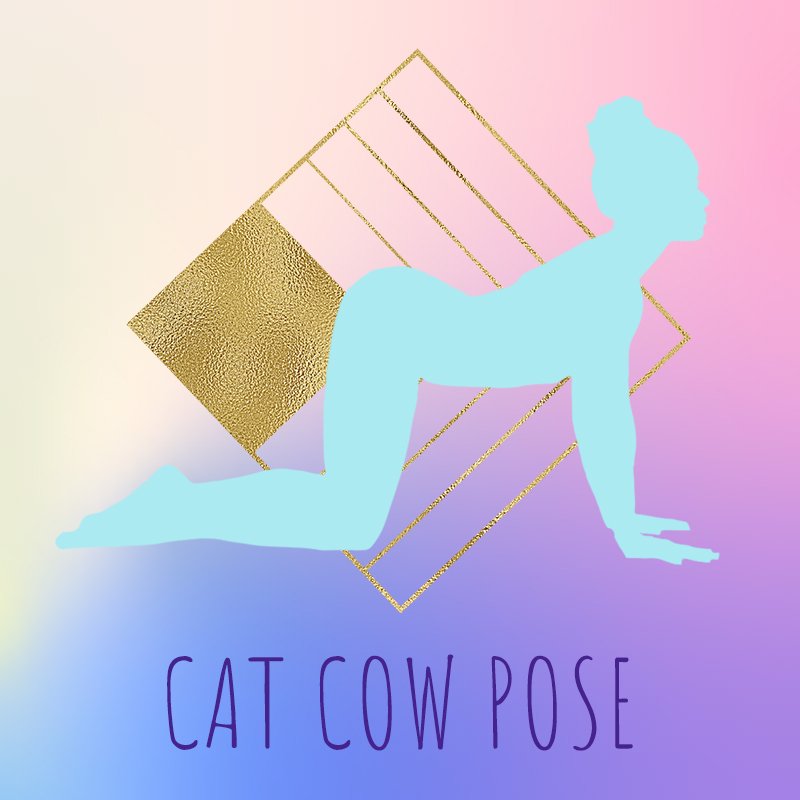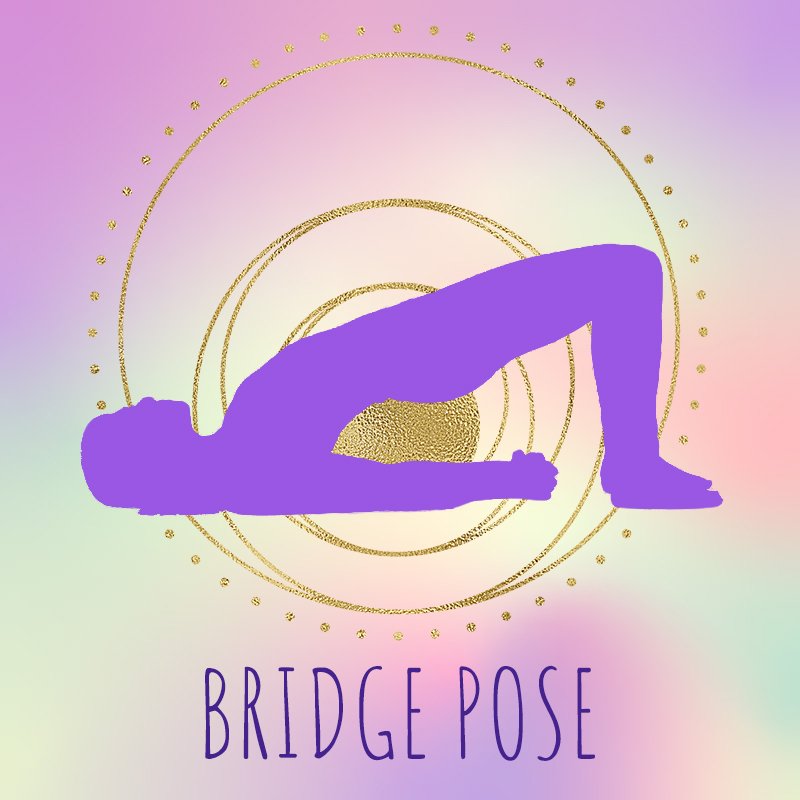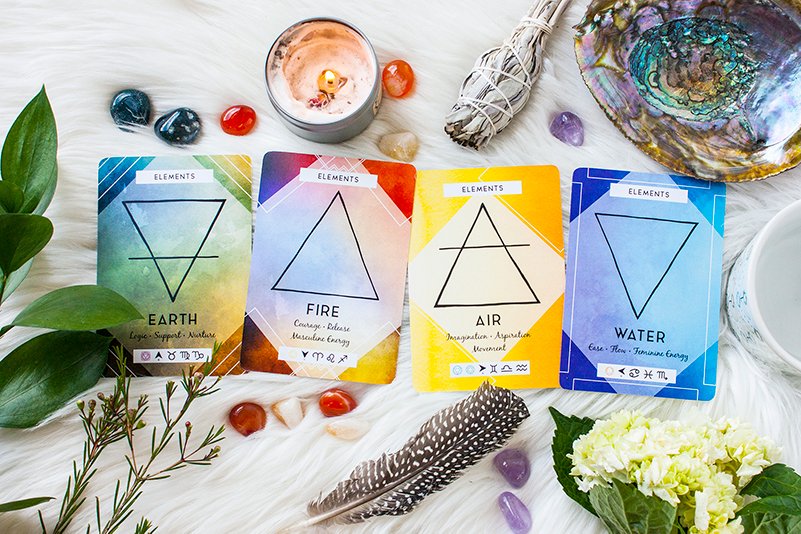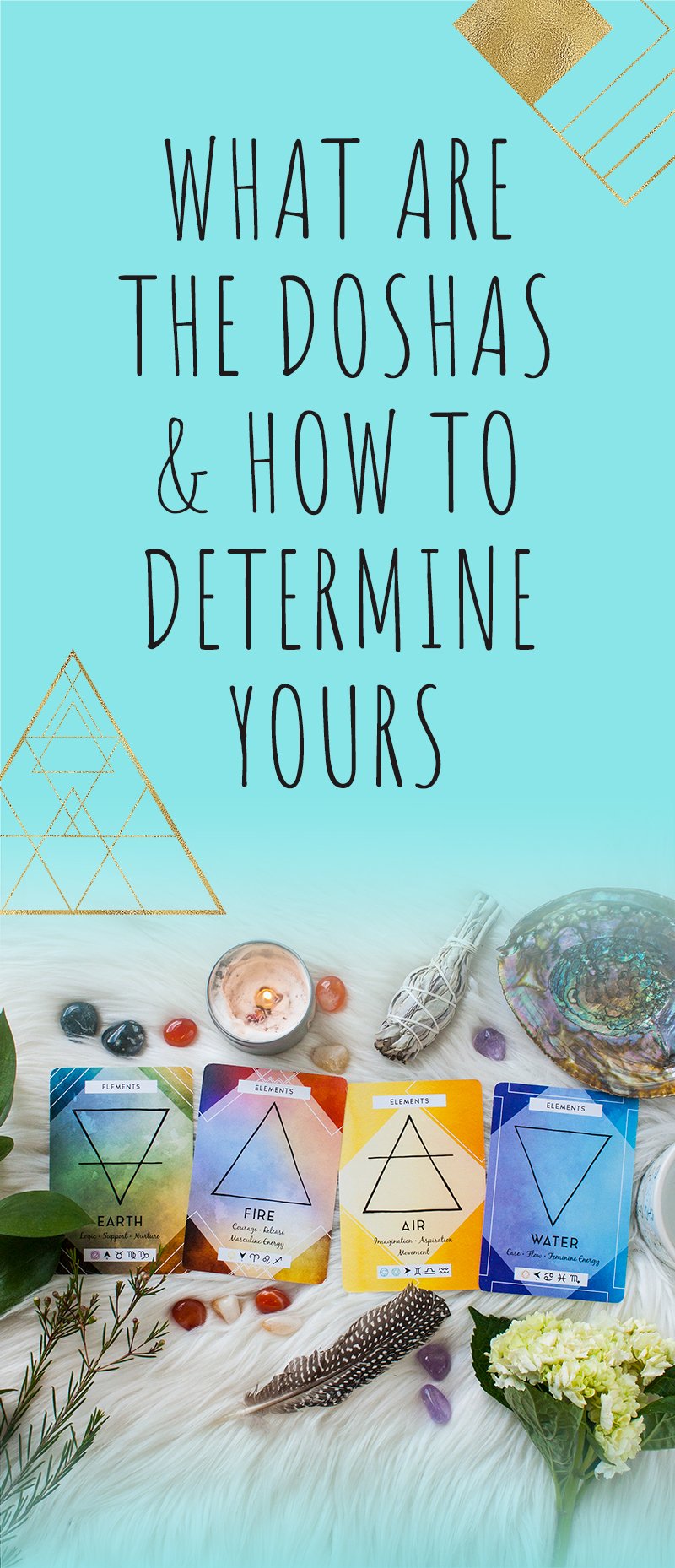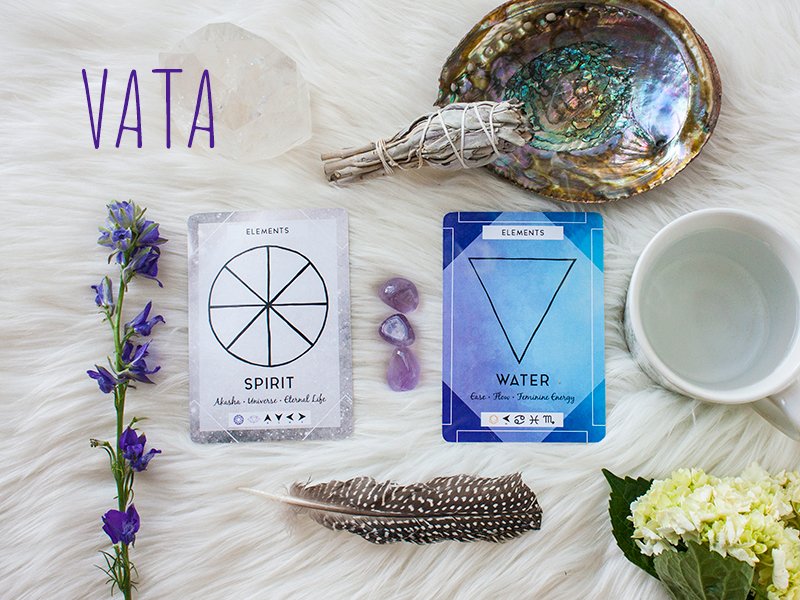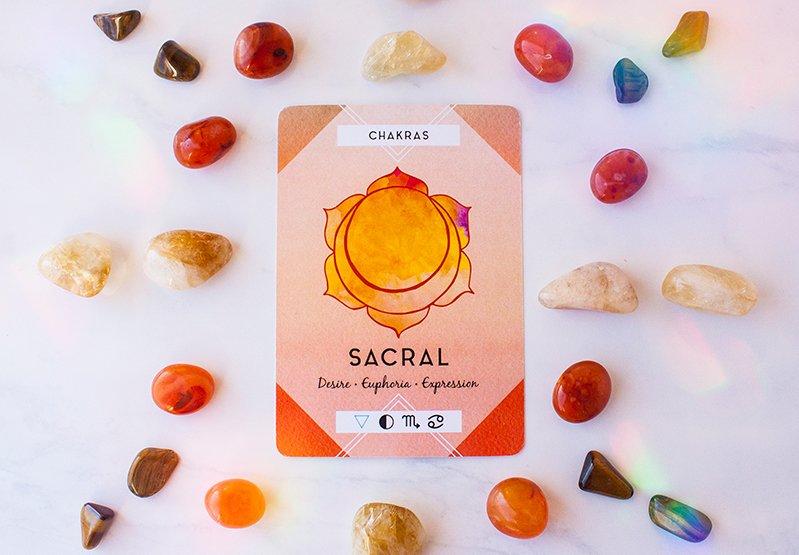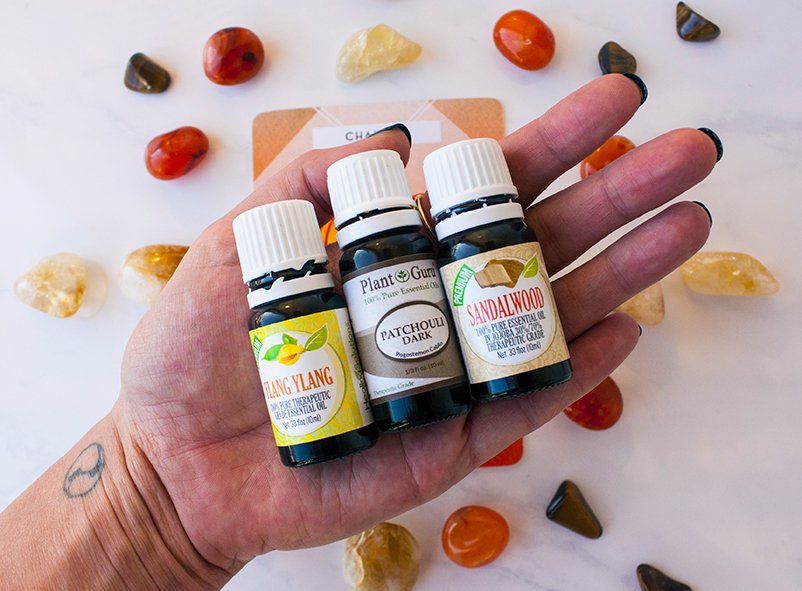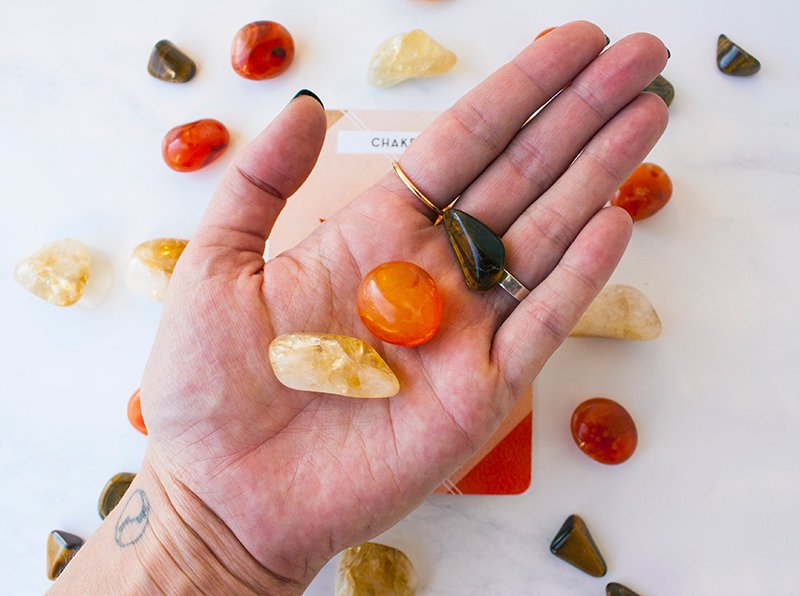Your Spiritual Tool Box for Stress & Anxiety
Whether you’re in full-on crisis mode or wading through a stressful season of life, knowing which direction to turn for relief can feel overwhelming. A quick fix like reaching for a glass of wine or a shopping splurge might help now and then, but it’s not a long-term solution. What tools can you rely on to help keep your cool when things seem to be falling apart around you?
Whether you’re in full-on crisis mode or wading through a stressful season of life, knowing which direction to turn for relief can feel overwhelming. A quick fix like reaching for a glass of wine or a shopping splurge might help now and then, but it’s not a long-term solution. What tools can you rely on to help keep your cool when things seem to be falling apart around you?
As a new mom to twins and a business owner, stress and anxiety have become part of my norm. Over the last year, I’ve had to put my spiritual tools to work like never before. I believe we all come to the Earth plane with an assortment of battles to accept and overcome to help our souls progress. We’re all fighting battles. The important part is how you walk through it.
Crisis often brings people to spirituality. I’m frequently asked, “ XYZ horrible thing has happened. Where do I begin?” Here are my top go-to tools that I turn to when life feels out of control.
1. Meditation & Mindfulness
Sit. Be still. Heal. When most people reach out to me asking how to ease stress and anxiety through their spiritual practice, they want a crystal suggestion to make everything OK. Sometimes, a crystal just won’t cut it and work better as an ancillary tool.
Meditation and mindfulness are at the top of my list because if you’re practicing them regularly, even five minutes a day, the rest of these tools will come easier.
Sitting in silence may feel incredibly uncomfortable, initially, if you’re going through a stressful season of life. If you haven’t given yourself a moment to process anything that’s happening in your life, of course, your mind is going to be running a mile a minute the moment you sit down.
During stressful times, I find it helpful to look at meditation as more of a time process and purge. Let all of the stuff that’s been running around in your mind run free. Permitting your thoughts to race around will allow you to process things you’ll otherwise keep cycling through over and over.
Once you’ve allowed your mind some time to run free with your worries, you might find a guided meditation helpful. I love all of the guided meditations from Meditation Oasis, and they have a wonderful selection of free meditations, including several specifically for stress and anxiety. You can also check out my Energy Reset Meditations Bundle and other guided meditations here.
Try meditating or sitting in silence for five to ten minutes a day for a week and see how you feel — having a hard time sticking to your meditation practice? Check out this blog post for ways to stick to it.
2. Body Awareness
Your miraculous body does so much for you during times of stress! Taking time to become aware of your body offers the opportunity to tune into something other than your worries and can give your body a needed release. We store stress and anxiety all over our bodies but often don’t even notice it because we become so used to it. Try this body awareness exercise a few times a week if you’re in the midst of a stressful time.
To become more aware of your body sit or lie down and name each part of your body. Start at your toes and work your way up to the top of your head. You can do this by saying something like “I feel my left big toe” or “I breathe into my right thigh” etc. for each body part. Take a breath for each body part you go over and spend extra time on any parts that feel extra tense. You can make this activity as long or as short as you need. If your time is limited, try doing this activity in the shower or at a stoplight. Even little moments of body awareness can help.
Mudras are another great tool your body offers. Learn more about using mudras during times of stress here.
3. Breathwork
When we’re stuck in worry and fear, our breath often stays high in our chest. Short chest breaths signal to our body that there’s danger nearby. Directing your breath deep into your belly can help break the anxiety cycle and send messages to your body that it’s OK to relax. It also can take a little bit more focus to remember to breathe from your belly, which can give your mind a break too.
Deep belly breaths are a given if you’re meditating or practicing body awareness but can be an invaluable tool when you’re on the run. Running late and stuck in traffic? Have a screaming child in your arms? Whatever your stressor and wherever you’re at your breath is available to you. The hardest part about this tool is remembering that it’s available. You can learn more about breathwork here.
Remember how I said that meditation and mindfulness would help with all of the other tools? If you’re meditating regularly, even five minutes a day, the thought to take deep belly breaths may come to you more readily than if you’re not meditating.
4. Accept the imperfectness
During times of stress and anxiety, it can be helpful, and sometimes necessary, to shift our expectations of ourselves. We so often compound our anxiety by placing pressure on ourselves to continue to perform at a near-perfect level even if we’re going through a stressful time. Warning, this one can feel the hardest because it often involves letting others see you in a vulnerable state.
Take an honest look at your week, what can you let go of to help you through this challenging time? Can you let go of cooking a few times and eat out? Can you call a friend or family member to ask for help with something you usually do for yourself? Can you take some time off from work to reset?Whether you choose to let some things go or are forced to, accept yourself and your life where it is in the moment, even if it doesn’t look the way you want it to right now. Accepting yourself where you’re at will let you off the hook from unnecessary self-imposed stress.
Working with a mantra can be helpful when working on acceptance. Find a list of mantras and learn more about using them here.
5. Crystals
Even though crystals may not be a cure-all for working through stress and anxiety, they can still serve a purpose. I like to think of crystals as a physical reminder of the tools I do have during stressful times.
Grounding stones like jasper, obsidian, onyx and smoky quartz are great candidates when it comes to keeping calm during times of stress. Beyond the grounding energy these stones offer, keeping them nearby can remind you throughout your day that you do have tools to help you through times of stress.
For more tips to help you get grounded, check out this blog post all about the root chakra.
I hope these tips make you feel more supported and offer some relief if you’re facing a hard season of life. Know that it will pass and that The Universe wants nothing but the best for you. Your soul is here to learn and grow!
How to Tap Into Your Resiliency (And Why You Should)
Resiliency is about your comeback rate.It’s not about never getting knocked down, or dropping into fear, or letting your ego drive the car. It’s about how fast you can come back: to joy, to love, to trust, to who you really are.Because we’re all humans, and life can be really messy. Sometimes things happen to us, sometimes we hurt people, and sometimes we forget our divine nature.
Resiliency is about your comeback rate.
It’s not about never getting knocked down, or dropping into fear, or letting your ego drive the car. It’s about how fast you can come back: to joy, to love, to trust, to who you really are.
Because we’re all humans, and life can be really messy. Sometimes things happen to us, sometimes we hurt people, and sometimes we forget our divine nature.
That’s where resiliency comes in. Resiliency is here to bring you back to trust when bad situations happen, to bring you back to love when fear starts to take over—even stronger and wiser than before, with an even deeper and more meaningful connection with yourself.
You may have heard before that you can only go into joy and pleasure as deep as you’ve gone into your pain. This is a necessary part of living and an important part of your spiritual practice. But that doesn’t mean you have to or even can live there.
Think of the moment you connect with your resiliency and come back to joy as the Temperance card in the tarot. You’ve been through death, but you’ve come through it into the magic of rebirth, of stillness, of calm. There are still more challenges ahead (the Devil card is next) but you can know that and still be in a place of Temperance.
Scroll down to get some tips to help you tap into your own resiliency and strengthen that connection.
Lean on your community.
You don’t have to do it alone. Who are the people you trust to tell it like it is, lifts you up, and not judge you? Whether it’s your mom, a close friend, or your sister, don’t be afraid to call on that person or those people to help you when you need it.
Look for the lesson or greater meaning.
You don’t have to believe that everything happens for a reason. But look for the greater meaning or lesson in whatever it is you’re going through— and if you can’t see it yourself, ask your community to help you find it.
I find that the tarot is an incredible tool for this. Each card of the Major Arcana is a step on the journey to the World, a card of wholeness and joy.
Try laying out each of the Major Arcana cards in front of you and asking yourself which card you’re in.
Are you dealing with a shedding of your former self, of parts of your life? Maybe you’re in Death.
Are past hurts keeping you in fear? Maybe you’re in the Fool reversed.
Each card can help you realize which lesson you’re learning right now. Once you pick your card, look at its place in the journey. See the greater context of where you’re heading—to the vibrant energy of the Sun, to the wild juicy feminine of the Moon, to the wholeness of the World.
Why do you do what you do in the world?
Whatever your greater purpose is, connect with that and remember that you are on this planet for a reason. You are here to bring forth what only you can bring forth, and the world needs.
So rest, feel your feelings, go through what you’re going through, and know that ultimately you will get through it because you are here to fulfill your greater purpose.
Connect with your intuition.
Is this ever not the answer? Connecting with your intuition can help you see the greater meaning in what you’re going through. It can help you know when you need to reach out for support and who to reach out to. It can help you know the best path to take forward.
If you’re feeling blocked, one simple thing you might like to do is ask your oracle or tarot cards, “What message does my intuition have for me right now?”
Get more tips to connect with your intuition in this post.
Find what makes you feel good.
When you feel stressed, upset, or you’re going through a difficult time, what are some simple things that help you feel better? Think about what they are for you (use the list below to spark your creativity) and write them down on a piece of paper that you can return to when things aren’t easy. Some ideas are:
Dancing
Doing yoga
Rubbing your feet with oils
FaceTiming that friend or family member who always knows what to say
Reading your favorite book
Spending more time alone
Spending more time with people you care about
Taking a walk
Playing a singing bowl
Listening to an inspiring podcast
Eating your favorite meal
Being held
Drinking a cup of tea
Receiving energy healing
Journaling
This is going to be super unique for everyone, so think about what it is for you!
Move your body.
You’ve probably heard a yoga teacher talk about how what you do on your mat is a mirror for life: what you do when it gets hard, how you talk to yourself, how you move through transitions.
It turns out, even science knows that’s true. The researchers who wrote the book Resilience: The Science of Mastering Life's Greatest Challenges actually found that the most resilient people in their studies had exercised regularly.
It turns out, that the stress of exercise helps us adapt to the stress of life challenges. So however you like to move, whether it’s yoga, running, weightlifting, dancing, jumping rope, or something else, try to make it a regular part of your life. It will actually help you be more resilient!
10 Ways to Increase Your Shakti Energy
How is a society that’s stuck in the patriarchy able to find balance? The answer lies in you. The answer lies in one person at a time increasing their Shakti energy.I’m sure you’ve heard the term “Shakti” before but do you know how to tap into this creative life force that is the personification of feminine energy? I’m going to share what this term means with you, but more importantly, how you can increase your own Shakti to help our world find balance. First, let’s dive a little deeper into what and who Shakti is.
How is a society that’s stuck in the patriarchy able to find balance? The answer lies in you. The answer lies in one person at a time increasing their Shakti energy.
I’m sure you’ve heard the term “Shakti” before but do you know how to tap into this creative life force that is the personification of feminine energy? I’m going to share what this term means with you, but more importantly, how you can increase your own Shakti to help our world find balance. First, let’s dive a little deeper into what and who Shakti is.
What is Shakti
Shakti is life, death, rebirth, destruction, and creation. Shakti energy is the divine feminine force coursing through the cosmos and all aspects of our reality. She is the ultimate Goddess and the creative energy behind all Goddesses. Even though Shakti is a divine feminine force, it is present in all life forms, male and female, though it may be repressed in some. The balancing force to Shakti is Shiva or masculine energy.
Who is Shakti
Shakti is referred to as the “Mother Goddess” in Hinduism. She is the Goddess that guides all other Goddesses. Shakti is represented in the Hindu Goddesses Durga, Parvati, and Kali. Each Goddess utilizes Shakti energy differently and can be called upon for different purposes.
Kundalini Shakti
If you’re familiar with Kundalini energy, then you have probably heard the term Shakti used here as well. Kundalini Shakti refers to the idea that every being has Shakti energy coiled up at the base of their spine, waiting to be awakened. You may have already had a Kundalini awakening and not even known about it! That’s another blog post for a different day though!
Here are ten simple ways to increase your Shakti. Warning! Shakti energy is INTENSE. Be mindful of this as you practice the following suggestions. Build in some time to ground yourself after practicing any of these exercises and if it feels like too much, take a break for a few days.
10 Ways to Increase Your Shakti Energy
1. Activate your sacral chakra
Your sacral chakra is your hub of creativity and feminine energy. This chakra is located below your belly button and above your pubic bone. Imagine it glowing orange with each inhale and exhale to awaken it. Learn more about activating your sacral chakra in this blog post.
2. Tap into the water element
The water element represents femininity, so it’s the element to focus on to increase your Shakti energy. Let the water element wash over you, literally, by taking a soothing bath. Learn more about yoga poses for the water element here and ways to represent the water element here.
3. Meditate, meditate, meditate
Meditation in and of itself will help increase your Shakti energy (check out guided meditations here) but here’s a technique to give it an extra boost. Visualize your Shakti energy coiled up like a snake at the base of your spine. With each breath visualize this snake-like energy uncoiling and traveling through each chakra, lighting it up and cleansing it along its path. Continue until you reach the crown chakra. This meditation can be very intense and energizing, allow ample time to calm and ground yourself afterward.
4. Call on Kali, Durga, or Parvati
Remember the three Hindu Goddesses I mentioned above? Kali, Durga, and Parvati represent Shakti in Hinduism, calling on any of them can bring some extra Shakti into your life. Each Goddess will bring a different kind of energy. Parvati is a Goddess of love, Durga is a warrior Goddess, and Kali is the destroyer who ultimately brings balance. Learn more about connecting with Kali here. Goddess cards are from The Goddess Oracle.
Goddess cards are from The Goddess Oracle.
5. Follow the Moon
The moon has long been associated with divine Goddess energy due to its correlation with our menstrual cycles and the Triple Goddess. Try charting your cycle or journaling with the moon to connect to this moon energy. Learn more about the Triple Goddess symbol here and more about rituals for every moon phase here.
7. Get in touch with your shadow side
The imbalance of Shakti in our society is a direct reflection of our own imbalances. We so often focus only on our light, while directly under the surface our shadow side is seething. Take time to explore your light and dark to find balance within yourself. Learn more about shadow work here.
8. Practice the Shakti mudra
Guess what? There’s a mudra dedicated to Shakti! Try using this mudra during meditation or your yoga practice to increase your Shakti. Breathe deeply and focus on Shakti rising from the base of your spine.
9. Yoga asana practice
Let’s jump straight to the obvious here, Goddess pose. Remember when I said Kundalini aka Shakti energy is coiled at the base of your spine? Any pose that helps activate the base of your spine can help get your Shakti flowing, and Goddess pose certainly does this! Try to work different variations of this pose into your yoga practice or any postures that activate the sacral and root chakra.
10. Breathe Deep
Prana, your breath or life force, is Shakti. Any focused breathing can help increase your prana and therefore your Shakti energy. If you’re not familiar with any pranayama techniques, start with a three-part breath. Inhale, filling your lower belly with air first, then your middle section, and last your chest. Exhale in the reverse order. Practice this three-part breath 5-10 times and notice how you feel after you’re done. If you’re familiar with different pranayama techniques, try adding one into your practice daily. You can learn more about breathwork here.
You might find that you’re already practicing some of these things regularly. If you’re not, don’t stress! No need to start implementing all of them right away, in fact, I wouldn’t recommend it. Start small and start with the tips that sound most appealing to you. Learn more about your chakras system, the moon phases, and more in The Goddess Discovery Book.
Heart-opening Yoga practice & breathwork to cultivate self-love
Every February, we’re reminded of the love that already exists within us. While there are so many different kinds of love in our lives, it all starts with us: from a place of deep self-love. In this blog, I’ll be sharing a heart-opening yoga practice and a Kundalini breathwork meditation to help you cultivate self-love.
Every February, we’re reminded of the love that already exists within us. While there are so many different kinds of love in our lives, it all starts with us: from a place of deep self-love.
In this blog, I’ll be sharing a heart-opening yoga practice and a Kundalini breathwork meditation to help you cultivate self-love.
Kundalini Breathwork meditation
This Kundalini yoga breathwork meditation is said to help give strength to your heart and open up your heart center.
Find a comfortable seat and extend your arms straight out in front of you. You want them to be parallel to the mat with your palms facing down. Close your eyes and focus your inner gaze at the center of your chin. Start to take long, slow, deep breaths, holding your arms steady in front of you.
Hold this breathwork meditation for three minutes. Then, move into our asana practice below.
Yoga practice
This yoga practice is focused on heart-opening yoga poses because heart openers, like the name suggests, help balance and open your heart chakra. Your heart chakra is the center of giving and receiving love in your body. Opening this center helps open you up to a flow of unconditional love within and outside of yourself.
Heart bench
As someone with chronically tight shoulders, heart bench is my favorite restorative pose to start off a yoga practice. For this pose, you’ll need two yoga blocks. If you don’t have blocks, try getting creative with stacks of books or a rolled yoga mat under the shoulders.
You’ll take your first block at either its low or medium height and place it lengthwise along the spine between the shoulder blades, opening the heart. The second block will go under your head at whatever height supports a long neck and open throat.
Breathe into your heart space here, visualizing each inhale sending breath into the chest and each exhale softening, opening, and expanding your heart chakra. Stay here for 3-5 minutes, breathing deeply.
Half-pigeon variation
To transition out of your heart bench, lower all the way onto your back, bend your knees, and press your whole back into your mat. Feel your whole back grounding into the Earth, resetting the spine.
When you feel ready, cross your right ankle over the bottom of the left thigh (right under the knee). Then prop yourself up on your forearms and roll the shoulders back to open the heart as you energetically push your right knee away from you, stretching the hips. Spend a minute or two here, breathing deeply into the heart center, and then repeat on the other side.
Low lunge
Slowly find your way to downward-facing dog and pedal out the feet. When you feel ready, inhale to step your left leg forward. Lower the knee onto a mat or blanket, and create enough space in the hips so that you can really feel a stretch into your right hip flexor. Inhale to lift the arms overhead, bending back into a crescent lunge.
After a few breaths with this arm variation, stack your palms over your heart and breathe into your hands, keeping your back bending.
Stay here for ten more breaths, then repeat on the other side.
Mountain pose flow
From your lunge, step the back leg forward into a forward fold at the top of your mat. Hold opposite elbows to help pull your chest to your thighs and find a few breaths here.
When you feel complete, release your arms and inhale to a flat back, palms to shins or thighs. Exhale to fold forward. Inhale to roll all the way up to stand, reaching up and back. Exhale to fold all the way forward as you chant “YAM” (pronounced YUM), the bija mantra for the heart chakra.
Continue to flow with your breath for at least 10 complete cycles. Let yourself find a rhythm and find softness through the face, the knees, the heart, as you move.
Dancer’s pose
After your last exhale, hold in your favorite version of forward fold for a few more breaths. When you feel complete, inhale to roll up through your spine and find mountain pose with your arms at your sides.
Create a stable foundation by grounding down through your left foot, pressing into all four corners of the foot and through each of the toes. Bend your right knee and take the ankle into the right hand behind you. Inhale to lift your left arm over your head.
Feel free to stay here. If you’d like to go deeper, use your next exhale to slowly kick your right foot back and hinge forward at the hips, opening your heart and your right hip flexor. Stay here for at least 10 breaths. If you find yourself feeling unsteady or falling out of the pose, practice talking to yourself in a loving way and come back into the pose without judgment!
After ten breaths or whenever you feel ready, use an exhale to release everything back down and take the post to your other side.
Cobra pose or upward facing dog
From mountain pose at the top of your mat, fold forward, and step back to downward-facing dog. Inhale to shift forward to plank and exhale to either lower halfway or lower all the way onto the belly. Inhale to lift into cobra or upward facing dog. Stay here for a few breaths, rolling the shoulders back, pressing into the tops of the feet, and firming through the legs. After a few breaths, exhale to shift back to downward-facing dog.
Repeat this sequence one to three times, then stay in downward-facing dog for a few breaths.
Child’s pose
Inhale to lower your knees, and exhale to shift your hips back into your favorite variation of child’s pose. Let this child’s pose be a place of deep presence with yourself — with your breath, with any feelings or thoughts that are coming up to the surface. Practice speaking to yourself lovingly and tending to yourself with care. Stay here for about twenty breaths.
Cat/cow flow
From child’s pose, inhale to lift yourself into tabletop. Start to move through a cat/cow flow with your breath, using your inhale to lift your tailbone and open your heart, and your exhale to round through your spine and tuck your chin. Feel free to add in any other movements that feel good to you, like opening up through the sides of your body or incorporating hip circles.
Heart to Earth pose
When you feel complete in cat/cow, find your way back to a neutral spine. Start to walk your palms out in front of you, keeping your hips stacked over your knees, slowly lowering your chest and forehead all the way to your mat.
This intense pose invites us into a place of deep surrender. Keep your awareness on your breath, sending it into your heart space, and let yourself be with whatever comes up here. Stay here for at least 10 breaths, but feel free to stay longer if that feels right for you.
Bridge pose
Slowly shift back into tabletop and all the way onto your back, bending your knees and planting your feet on your mat. Inhale to slowly lift your hips and lift your arms all the way overhead, backs of palms touching down behind you. Breathe here in this bridge pose variation for 10 breaths, using an exhale to slowly lower your hips and arms back down.
Find a counterpose after you come down by walking your feet wider than hip’s distance and releasing your knees to rest in on each other. Place your palms on your belly and rest here for 5-10 breaths.
Reclining cobbler pose
Find your savasana in reclining cobbler’s pose, bringing the soles of your feet together. Rest one palm on your heart and one palm on your belly, letting yourself rest, relax, and integrate the benefits of your practice. Stay here as long as you like, but make sure you let yourself spend at least three minutes here.
Explore more blogs to help you cultivate self-love here:
What Are the Doshas & How to Determine Yours
Ayurveda is known as the sister science to yoga. It’s a traditional Hindu system of medicine developed in ancient India, based on holistic integration of mind and body for optimal balance and health.The word literally translates to life science or knowledge, showing Ayurveda’s holistic approach to health. Unlike Western medicine, Ayurveda focuses on food and lifestyle, rather than medication, and prevention to help you get healthier before you get sick.
Ayurveda is known as the sister science to yoga. It’s a traditional Hindu system of medicine developed in ancient India, based on holistic integration of mind and body for optimal balance and health.
The word literally translates to life science or knowledge, showing Ayurveda’s holistic approach to health. Unlike Western medicine, Ayurveda focuses on food and lifestyle, rather than medication, and prevention to help you get healthier before you get sick.
Ayurvedic Doshas
Doshas are the different types of energy in your body. Each dosha is associated with different elements and qualities, which I’ll get into below.
We’re each born with a specific dosha constitution, or makeup. We can learn a lot about what’s best for our bodies by understanding our our dominant dosha constitution.
There are three doshas: Vata, Pitta, and Kapha. Each of us has all three doshas within us, but we are typically dominant in one or two doshas. The qualities of each of these doshas manifest in your mental, physical, and emotional bodies (remember that holistic approach I talked about above!).
Vata is composed of space and air. Its qualities are dry, light, cool, rough, subtle, and mobile. You may be more Vata if you…
Tend to get stuck in your head or get more anxious energy
Have a lot of active, creative energy
Have dry or brittle skin and hair
Tend to run cold
Get constipated easily
Sometimes feel “spacey”
Have a thinner, lighter frame
Pitta is composed of fire and water. Its qualities are oily, sharp, hot, light, fleshy smelling, spreading, and liquid. You may be more Pitta if you…
Have active digestion
Usually run hot
Have oilier skin
Have to eat regularly and may get lightheaded or cranky if you miss a meal
Have a more fiery, aggressive personality
Get sweaty easily
Are a leader
Kapha is composed of water and earth. Its qualities are unctuous, cool, heavy, slow, smooth, soft, dense, viscous, and stable. You may be more Kapha if you…
Tend to need more sleep
Have a heavier frame
Have dense, thick hair
Move more slowly
Tend to get excess mucous
Are fairly laid-back
Are well-grounded
Are an empath or very sensitive person with a big heart
These are general guidelines. I recommend taking this quiz from Banyan Botanicals to find out for sure!
How to balance your Dosha
So you’ve discovered your dosha constitution. Now how do you balance it?Ayurveda uses the principle of like increases like, and therefore you can look to opposites as medicine.For those of us more dominant in Pitta energy, you can balance that Pitta by focusing on:
Sweet, bitter, and astringent tastes (think sweet potatoes and basil for sweet, turmeric and cumin for bitter, avocado and apples for astringent)
Cool and dry environments
Cultivating practices that help you go with the flow rather than force
Fresh, cooling foods
A cooling, relaxing yoga practice
For those of us more dominant in Vata energy, you can balance that Vata by focusing on:
Sweet, sour, and salty tastes (think dates and cashews for sweet, lemon and pickles for sour, and celery and sea salt for salty)
Calm, grounding environments
Stabilizing routines
Wetter, warmer climates
Warming, mushy foods like kitchery and soup
Doing one thing at one time (not multitasking)
Regular meditation
A warming yoga practice that cultivates fluidity and is easy on the joints
For those of us more dominant in Kapha energy, you can balance that Kapha by focusing on:
Pungent, bitter, and astringent tastes (think onion and garlic for pungent, turmeric and cumin for bitter, and avocado and apples for astringent)
A warm, dry climate
Warming, light foods (nothing too heavy)
An active routine including things like biking, running, and hiking
A more challenging, intense yoga practice in a warm environment
Learn more about the elements that make up the doshas from The Ritual Deck (pictured).
Resources for further study
As you can imagine, Ayurveda is a complex, in-depth system that you’re not going to learn in one blog post. If you’d like to go deeper, I recommend checking out some of these resources:
Ayurveda: The Science of Self Healing by Dr. Vasant Lad
The Complete Book of Ayurvedic Home Remedies: A Comprehensive Guide To The Ancient Healing of India by Dr. Vasant Lad
Ayurveda by Sahara Rose
The Everyday Ayurveda Cookbook by Kate O’Donnell
How to Open Your Sacral Chakra & Know When it's Blocked
The sacral chakra, Svadhisthana, is one of the chakras I personally feel most connected to. I think in the spiritual community, we can sometimes forget how important the lower chakras are, but remember: you are a spiritual being in a physical body! So the chakras we tend to associate with our physical bodies more, like the root, sacral, and solar plexus chakras, are just as important as the higher chakras like your crown and third eye.The sacral chakra is your center of creativity, sexuality, and feeling. It’s ruled by the element of water, and it’s located at the center of your low belly about three inches from your navel.
The sacral chakra, Svadhisthana, is one of the chakras I personally feel most connected to. I think in the spiritual community, we can sometimes forget how important the lower chakras are, but remember: you are a spiritual being in a physical body! So the chakras we tend to associate with our physical bodies more, like the root, sacral, and solar plexus chakras, are just as important as the higher chakras like your crown and third eye.
The sacral chakra is your center of creativity, sexuality, and feeling. It’s ruled by the element of water, and it’s located at the center of your low belly about three inches from your navel.
When this chakra is open, you’re able to feel deep pleasure in your life. You’re able to really feel the world around you and you’re connected to your emotions. You’re able to flow, expand, have healthy relationships with others, and use your creativity.
When this chakra is blocked, it may manifest as:
Disconnection from your sexuality or being ruled by your sexuality
Experiencing a lack of pleasure in your day-to-day life
Inability to connect with your creative energy
Feeling stuck in a certain feeling or mood
Dependency on a person or substance that gives you pleasure
Inability to feel your feelings or being too ruled by your emotions
If any of those sound like you, don’t worry. Our chakras are fluid, just like us, and they can change from day to day. Scroll down to get 10 ways to unblock your sacral chakra to connect with your creative and emotional flow.
The card shown in the image is from The Ritual Deck.
Get creative
This is one of my favorite ways to open this chakra! Even if you don’t feel creative in the moment, just start creating something. It might surprise you how your energy starts to flow! Try painting, writing, drawing, coloring, collaging, creating your own movement practice, or experimenting in the kitchen.
Use scents
My go-to essential oils for opening your sacral chakra are:
Tangerine
Orange
Ylang ylang
Patchouli
Bergamot
Sandalwood
Rosewood
Try massaging your low belly with one or more of the oils (diluting with a carrier oil as needed), diffusing them in your space, or placing a few drops in your bath (which, bonus points, connects you with the element of water!).
Dance
I know everyone says this, but seriously, dance like no one’s watching (because no one is!). Put on your favorite music and move intuitively however feels good for you. If you’d like, incorporate some hip circles to help you get into your low belly.
Breathing into your low belly. As you’re laying down, place your hands on your low belly. With your inhale, feel your hands rise as you flood the belly with breath, sending your life force energy to this chakra. As you exhale, feel your sacral center soften, expand, and open.
Use crystals
Some crystals that help open your sacral chakra are:
Citrine
Carnelian
Orange aventurine
Orange calcite
Goldstone
Tiger’s eye
Sunstone
Peach selenite
Try sleeping with them, meditating with them on your low belly, placing them around your home, or placing a little tumbled stone in your pocket to carry with you all day.
Meditation
Bring your palms to the center of your sacral chakra in your low belly, and start to take deep belly breaths into that space. With each inhale, visualize a little orange ball of light over your sacral chakra. With each exhale, visualize it opening, softening, and expanding until your entire body is surrounded by a beautiful aura of pure orange light.
Check out my Energy Reset Meditation Bundle here.
Use affirmations
Write them down, say them every day, make them the background of your phone—the options are endless! Choose an affirmation from the list below or create your own:
I am fully in my body.
Creative and sexual energy runs through me.
I am in love with life.
I am a passionate being.
I am deeply connected to my feelings.
I honor my feelings.
I honor my pleasure.
Yoga poses
Poses that stretch your hips are really helpful for opening your sacral chakra. Some of my favorites are:
Low lunge
Goddess pose
Reclining cobbler’s pose
Wide-legged standing forward fold
Frog pose
In each pose, just remember to breathe into your low belly!
Get to the root of the blockage
One of my favorite ways to get to the root of a chakra blockage is pulling tarot cards for these two simple questions:
Why is my sacral chakra blocked?
Advice for moving through the blockage
Tarot cards have such a beautiful, helpful way of getting to the heart of the matter. If you’re feeling like there’s a deep, underlying shadow or issue holding you back from fully stepping into your sexual and creative power, try this.
Play with color
The color associated with Svadhisthana is orange. Try bringing more of this color into your life by lighting orange candles, eating orange foods, wearing orange clothes, or painting your nails orange.







